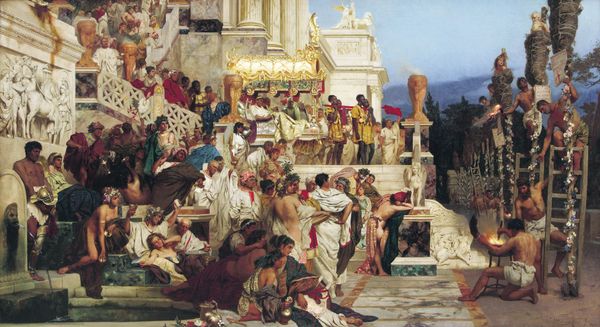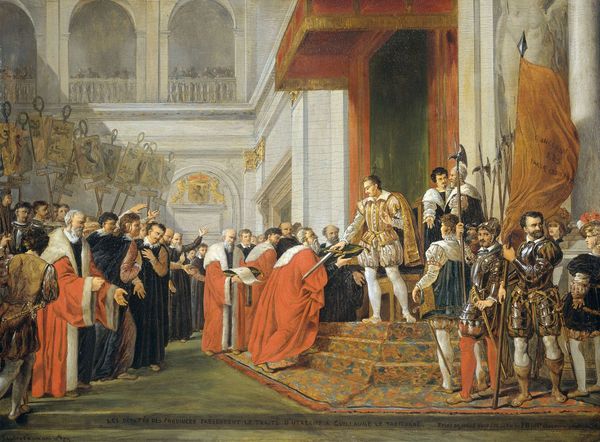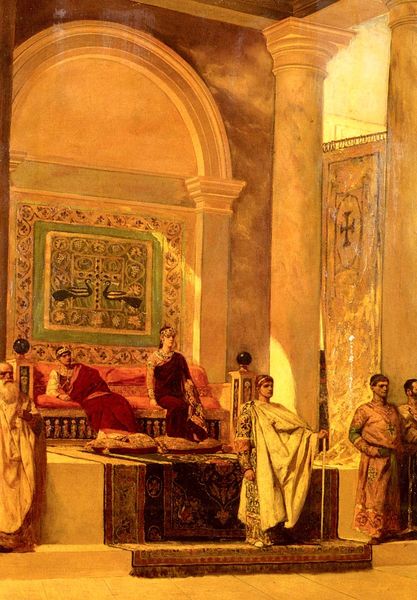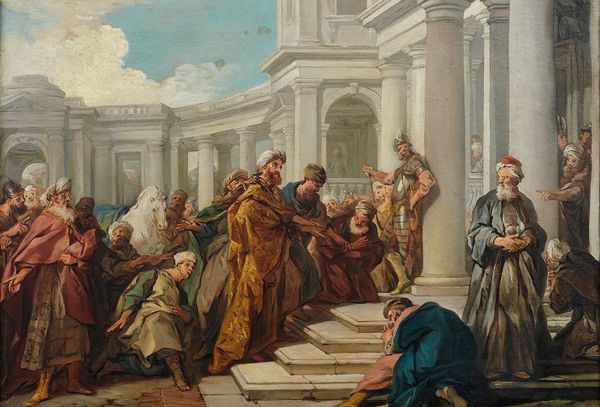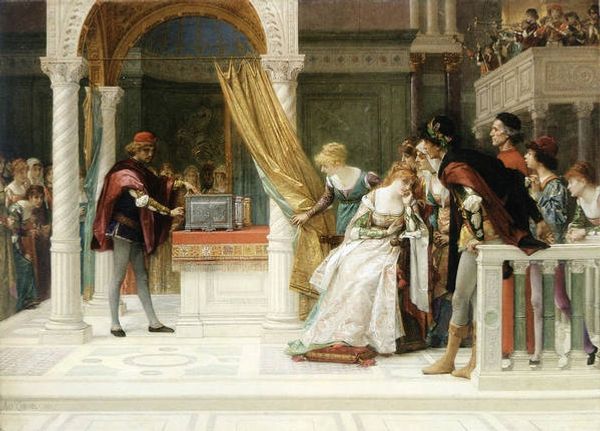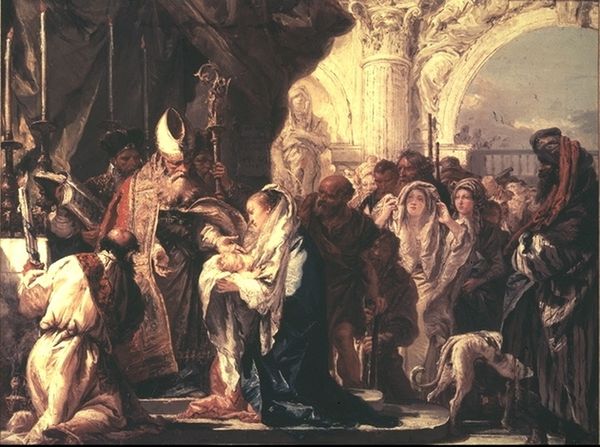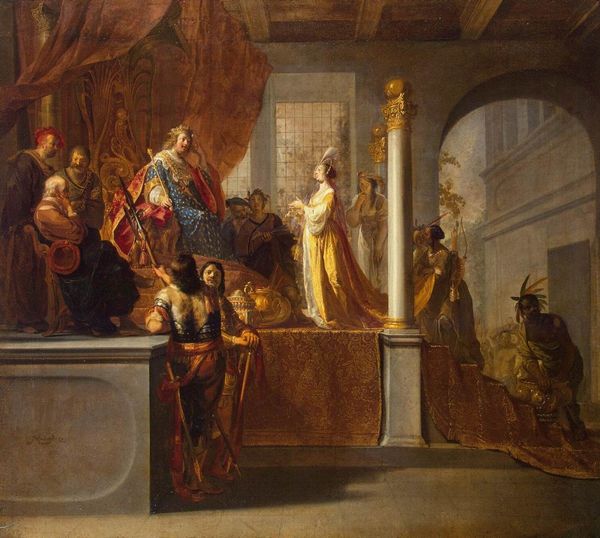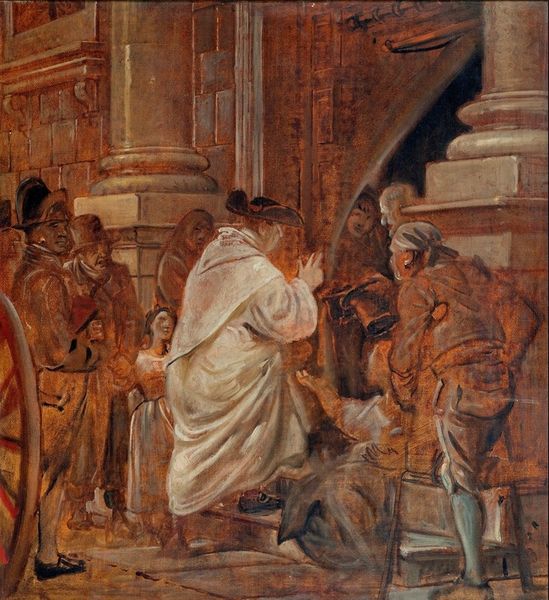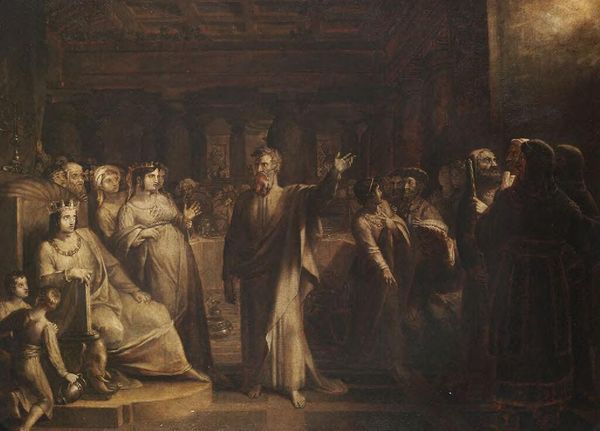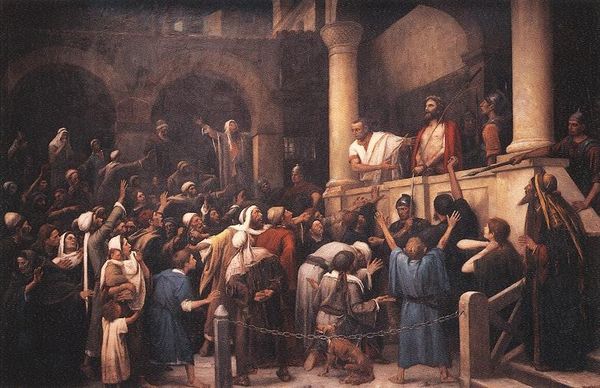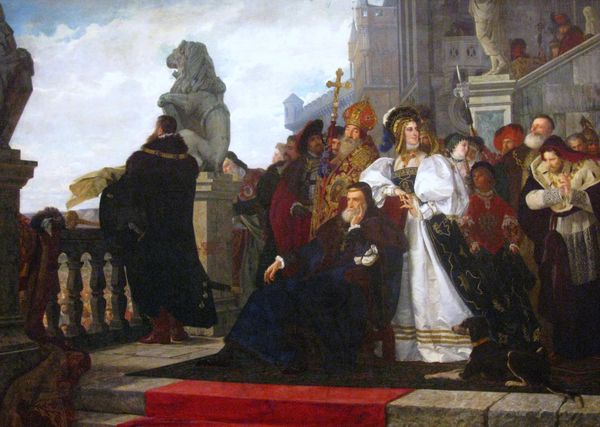
painting, oil-paint
#
portrait
#
gouache
#
narrative-art
#
painting
#
oil-paint
#
oil painting
#
romanticism
#
chiaroscuro
#
painterly
#
history-painting
Copyright: Public Domain: Artvee
Editor: Here we have "The Execution of the Doge Marino Faliero" by Eugène Delacroix, painted around 1825-1826 using oil. The scene is quite dramatic. The body at the bottom certainly grabs your attention first. What social commentary might Delacroix be making here? Curator: That's an insightful observation. Delacroix's work frequently engaged with themes of political power and its consequences, especially in light of the French Revolution. "The Execution..." depicts a rather turbulent moment in Venetian history, the beheading of a Doge for treason. The placement of the body is meant to confront us, the viewers, with the visceral reality of power. Editor: So, this isn’t just history painting, but also a statement on power dynamics? Curator: Exactly. Think about who commissions history paintings, who is included and excluded from the frame, and how that narrative is being framed. Delacroix uses the dramatic lighting, the chaotic crowd, and the sheer scale to question the established order, prompting us to think about who benefits from these historical narratives and whose voices are silenced. Notice, too, that we're witnessing *not* a triumph but a failure of leadership. Editor: The scale feels really important now that you mention it; almost like an epic tragedy playing out. Does the painting's location influence how we perceive the message, knowing it is in a museum? Curator: Absolutely. The museum space, as an institution, plays a significant role in legitimizing certain historical interpretations. Delacroix's work, placed within that context, prompts dialogue about how museums themselves participate in constructing collective memory and reinforcing specific narratives about power, justice, and social control. We need to constantly challenge these displays to consider alternative narratives. Editor: That's a perspective I hadn't considered before, the painting really has much to say about the nature of history and the art world itself. Curator: Precisely, it becomes more than just art; it is an archive for social and political thought.
Comments
No comments
Be the first to comment and join the conversation on the ultimate creative platform.
